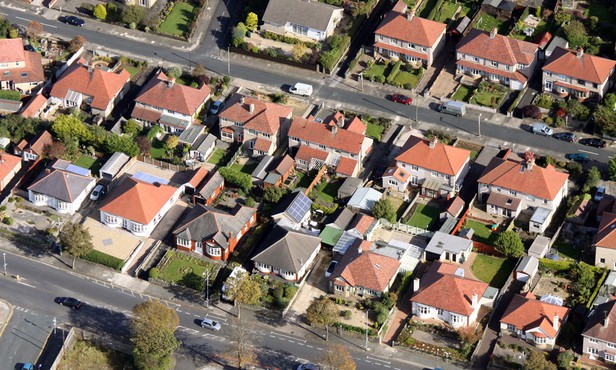
On a yearly basis house price growth was up 5.4% year-on-year in June, more than double the 2.2% year-on-year price growth seen 12 months ago.
The data shows that prices are being propped up, in part at least, by a chronic undersupply of properties coming to market.
There has been a 25% fall in the volume of homes for sale in the first half of the year when compared to the same period last year.
Supply has failed to keep pace with demand since January 2021.
Transaction volumes however remain strong – up 22% on the average levels seen in 2020.
That said, buyer demand dipped 9% in the first half of July after the initial stamp duty holiday ended, but overall remains elevated – up 80% compared to the average for this time of year in the more ‘normal’ market conditions in 2017-19.
Northern Ireland and Wales saw the highest level of house price growth of 8.6% and 8.4% respectively, which equates to the highest growth in either country for 16 years in Wales.
At a regional level the North West (7.3%) and Yorkshire & the Humber (6.8%) top the charts, while London trails with annual house price growth of 2.3%.
Price growth is expected to edge upwards to 6% in the coming months before easing back towards the end of the year as the impact of the extended stamp duty holiday unwinds and the economic landscape becomes more challenging.
Spencer Wyer, vice president of technology at Hometrack, said: “A number of factors will continue the elevated demand for houses through to the end of Q4, including ongoing buyer preference for more space.
“Vendors selling flats will need to bear this in mind with regard to pricing expectations, with house price growth – at 7.3% – more than five times higher than current growth rates for flats.”
“That said, demand for flats will still be underpinned by a continuation of first-time buyer demand, and the emergence of new sub-1% five-year mortgage products.”
“We’re observing two trends as a result of this. Firstly, as you’d expect, a continuation of the growth in higher-value mortgage applications that we first reported in response to last month’s house price index.
“Secondly – and perhaps less expected – Hometrack’s AVM is being more measured about price rises than the headline figures – providing a dependable baseline for mortgage lender decision-making.
“This correlates to an increase we have noticed in surveyors down-valuing physically valued properties.”



